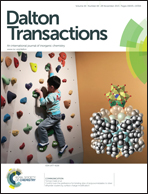Functional metal–bipyridinium frameworks: self-assembly and applications
Abstract
Metal–organic frameworks (MOFs) as newly emerged materials have experienced rapid development in the last few years. The modular synthesis procedure allows integrating functional groups in their frameworks with varied applications. Due to the easy modification of the backbone and highly charged characteristics with interesting electron-active properties, the use of bipyridinium derivatives as synthons for the fabrication of functional metal–bipyridinium frameworks (MBPFs) has attracted increased interest over the past few years. Various bipyridinium-bearing ligands have been designed for the construction of functional MBPFs, and some of them present intriguing properties for potential applications including photochromism and photoswitching, sensing, molecule adsorption and separation. This perspective aims to highlight the recent progress in this area, and seeks to uncover promising ideas that will underscore future advancements at both the fundamental and applied levels.


 Please wait while we load your content...
Please wait while we load your content...